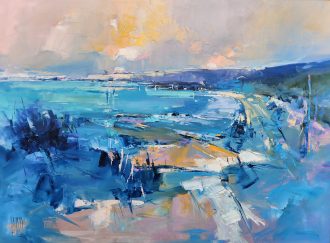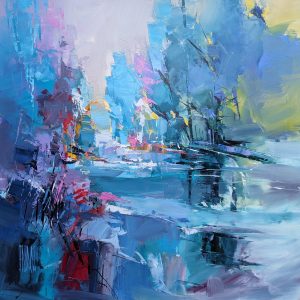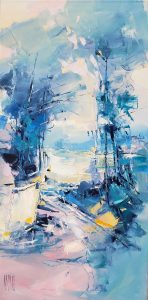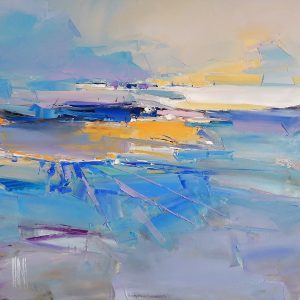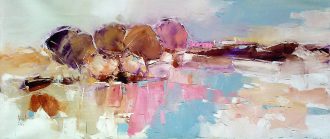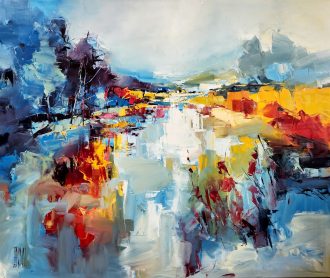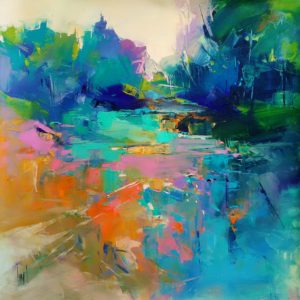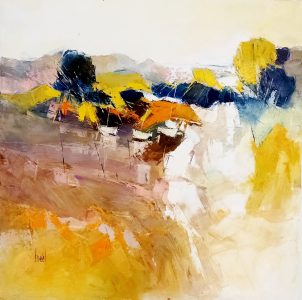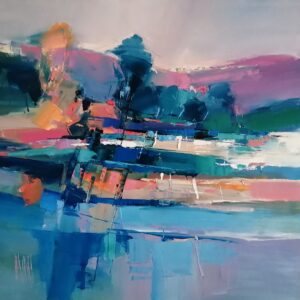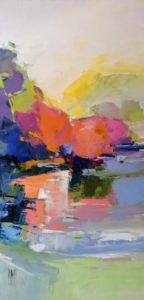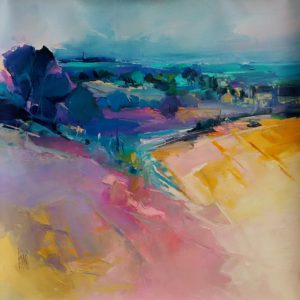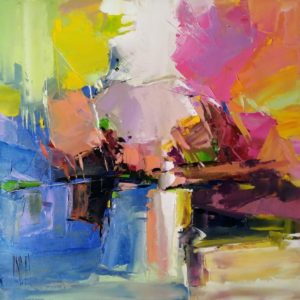< Artists
Hervé Lenouvel
Born in Breton, in 1960, Hervé Lenouvel had an assertion to paint at a very young age. He spent his childhood in the countryside where his love of nature inspired him to paint. He grew up with nature and felt a spiritual bond with his surroundings.
The time devoted in front of the canvas was the result of his personal journey translating the emotions he felt while working with color, composition and subject matter. Early on, Lenouvel embraced a figurative career and then moved towards a more suggestive approach. Equilibrium, shapes, harmony of colors, materials and light play a vital role in his paintings.
Though his art is abstract in nature, it has a representational aspect. The sense of movement combined with a rich color palette evoke feelings of emotion. Lenouvel masters his subject matter and expresses his ideas on canvas in a fresh approach that is pure instinct.
He reflects a world that captures an atmosphere of quiet sweetness. This process develops into a work of art where the viewer is captivated by Lenouvel’s vision translated on canvas.
Hervé Lenouvel’s paintings have been exhibited in France for over 25 years. East West Fine Art represents Lenouvel exclusively in the United States.
Herve Lenouvel style could be called Fauvism. Many art critics compare Herve’s Lenouvel with Henry Matisse, Vlaminck, Paul Gaugin.
Now that the world is familiar with cubism, surrealism minimalism and many other styles that are far from an academic manner, the revolutionary nature of the Fauvist approach is muffled. But for contemporaries, it was obvious. And it was not only in the “orange skies” and “blue faces”, but in the whole complex of artistic features that create the basis of style and deny the canons of classicism.
Key features of Fauvism:
- the use of intense, vibrant colors, moreover, “wildly” and non-standard;
- when working with a cold and dark palette – making hot accents, and, again, original coloristic solutions;
- the desire for purity and separation of color zones;
- playing on expressive contrasts (rejection of smooth color transitions, the collision of opposites – for example, volcanic scarlet and bottomless blue);
- the dominant of the creator’s internal vision over reality (it doesn’t matter what color the sky really is – it is important how the artist sees it);
- rejection of chiaroscuro and linear perspective, which led to the disappearance of volumes;
- planar character of the picture ;
- generalization of forms;
- dynamism, sharpness of lines and composition;
- spontaneity of creativity, expressiveness, high emotional richness.
All this fills the Fauvist canvases with wild expression and wild energy.
Naples Art Museum honored the style of Fauvism, exhibiting paintings by such prominent artist as Birgen Sandzen.



